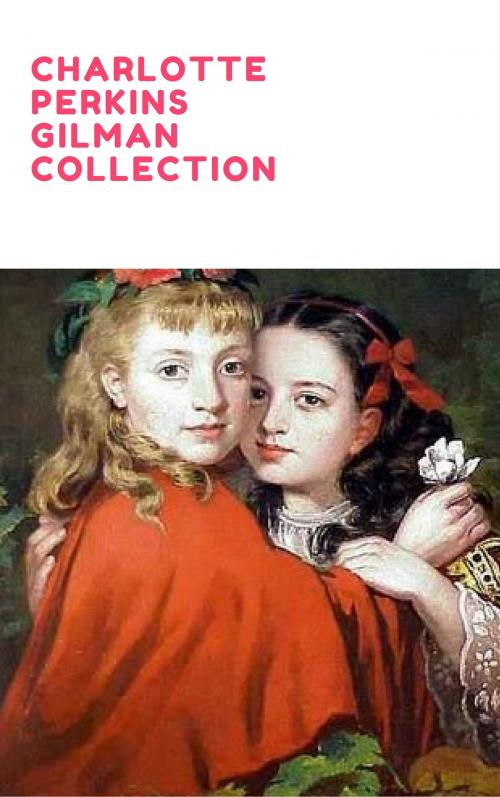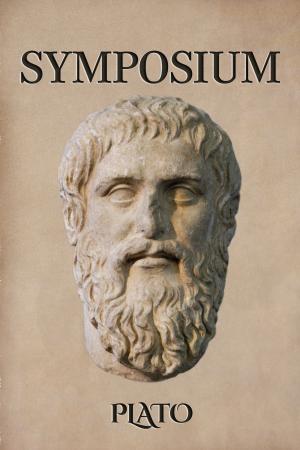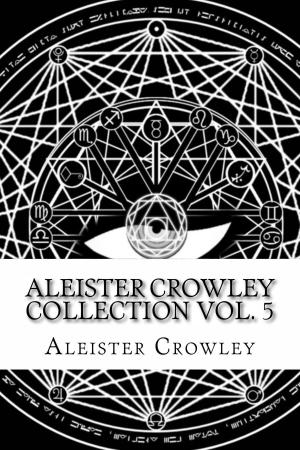Charlotte Perkins Gilman Collection
The Yellow Wallpaper, Herland and The Man-Made World
Nonfiction, Social & Cultural Studies, Social Science, Gender Studies, Feminism & Feminist Theory, Women&, Anthropology| Author: | Charlotte Perkins Gilman | ISBN: | 1230000244963 |
| Publisher: | Enhanced E-Books | Publication: | June 5, 2014 |
| Imprint: | Language: | English |
| Author: | Charlotte Perkins Gilman |
| ISBN: | 1230000244963 |
| Publisher: | Enhanced E-Books |
| Publication: | June 5, 2014 |
| Imprint: | |
| Language: | English |
Fans of feminist trailblazer Charlotte Perkins Gilman are in for a treat. Gathered in this volume are three of Gilman's most famous works:
The Yellow Wallpaper
This short story is one of the most popular pre-1923 texts in the English language, ranking third only to The Bible and Shakespeare for free downloads on Project Gutenberg. The strange, haunting vignette delineates a woman’s post-partum mental breakdown.
First published in January 1892 in The New England Magazine, it is a landmark work of American feminist literature, illustrating attitudes in the 19th century toward women's physical and mental health. It anticipates the works of Sylvia Plath and other feminst writers seven decades later.
Herland
This remarkable work from 1915 is a utopian novel about an isolated society composed entirely of women, who reproduce via parthenogenesis (asexual reproduction). The result is an ideal social order: free of war, conflict, and domination. The story’s set up is like something from the movies:
Vandyk "Van" Jennings, a student of sociology, and two friends (Terry O. Nicholson and Jeff Margrave), form an expedition party to explore an area of uncharted land where it is rumored lives a society consisting entirely of women. The men do not entirely believe the rumors because they are unable to think of a way how human reproduction could occur without males. The men speculate about what a society of women would be like, each guessing differently based on the stereotype of women which he holds most dear: Jeff regarding women as things to be served and protected; Terry viewing them as things to be conquered and won.
When the explorers reach their destination, they proceed with caution, hiding the biplane they arrive in, and trying to keep themselves hidden in the forests that border the land. They are quickly found by three young women who they realize are observing them from the treetops. After attempting to catch the girls with trickery, the men end up chasing the young women towards a town or village. The women outrun them easily and disappear among the houses, which, Van notes are exceptionally well made and attractive. After meeting the first inhabitants of this new land (which Van names Herland) the men proceed more cautiously, noting that the girls they met were strong, agile, and completely unafraid.
Their caution is warranted because as the men enter the town where the girls disappeared, they become surrounded by a large group of women who march them towards an official looking building. The three men attempt an escape but are swiftly and easily overpowered by the large group of women and eventually anesthetized…
The remainder of the Utopian story develops in delightful, unexpected ways. The central theme is defining gender—the roles, how it is socially constructed, and how it is viewed as unchangeable by both genders. The idea of defining genders begins when the men first meet the women of Herland. In comparison to the women of their world, the men view the women of Herland to have masculine physical features: having short, functional hair and lacking curves. The women are physically strong and demonstrate this by building huge buildings in their country.
The Man Made World
Originally published as Our Androcentric Culture, or The Man Made World in 1911, this is one of the first feminist works to explore the now familiar credo that women are peace-loving nurturers while men dominate through violence. This is Gilman's exposition of Lester Ward's theory "that woman is the race type, and the male, originally but a sex type, reaching a later equality with the female, and, in the human race, becoming her master for a considerable historic period." An important and prescient work, published fifty-eight years before Kate Millet’s Sexual Politics.
Fans of feminist trailblazer Charlotte Perkins Gilman are in for a treat. Gathered in this volume are three of Gilman's most famous works:
The Yellow Wallpaper
This short story is one of the most popular pre-1923 texts in the English language, ranking third only to The Bible and Shakespeare for free downloads on Project Gutenberg. The strange, haunting vignette delineates a woman’s post-partum mental breakdown.
First published in January 1892 in The New England Magazine, it is a landmark work of American feminist literature, illustrating attitudes in the 19th century toward women's physical and mental health. It anticipates the works of Sylvia Plath and other feminst writers seven decades later.
Herland
This remarkable work from 1915 is a utopian novel about an isolated society composed entirely of women, who reproduce via parthenogenesis (asexual reproduction). The result is an ideal social order: free of war, conflict, and domination. The story’s set up is like something from the movies:
Vandyk "Van" Jennings, a student of sociology, and two friends (Terry O. Nicholson and Jeff Margrave), form an expedition party to explore an area of uncharted land where it is rumored lives a society consisting entirely of women. The men do not entirely believe the rumors because they are unable to think of a way how human reproduction could occur without males. The men speculate about what a society of women would be like, each guessing differently based on the stereotype of women which he holds most dear: Jeff regarding women as things to be served and protected; Terry viewing them as things to be conquered and won.
When the explorers reach their destination, they proceed with caution, hiding the biplane they arrive in, and trying to keep themselves hidden in the forests that border the land. They are quickly found by three young women who they realize are observing them from the treetops. After attempting to catch the girls with trickery, the men end up chasing the young women towards a town or village. The women outrun them easily and disappear among the houses, which, Van notes are exceptionally well made and attractive. After meeting the first inhabitants of this new land (which Van names Herland) the men proceed more cautiously, noting that the girls they met were strong, agile, and completely unafraid.
Their caution is warranted because as the men enter the town where the girls disappeared, they become surrounded by a large group of women who march them towards an official looking building. The three men attempt an escape but are swiftly and easily overpowered by the large group of women and eventually anesthetized…
The remainder of the Utopian story develops in delightful, unexpected ways. The central theme is defining gender—the roles, how it is socially constructed, and how it is viewed as unchangeable by both genders. The idea of defining genders begins when the men first meet the women of Herland. In comparison to the women of their world, the men view the women of Herland to have masculine physical features: having short, functional hair and lacking curves. The women are physically strong and demonstrate this by building huge buildings in their country.
The Man Made World
Originally published as Our Androcentric Culture, or The Man Made World in 1911, this is one of the first feminist works to explore the now familiar credo that women are peace-loving nurturers while men dominate through violence. This is Gilman's exposition of Lester Ward's theory "that woman is the race type, and the male, originally but a sex type, reaching a later equality with the female, and, in the human race, becoming her master for a considerable historic period." An important and prescient work, published fifty-eight years before Kate Millet’s Sexual Politics.















